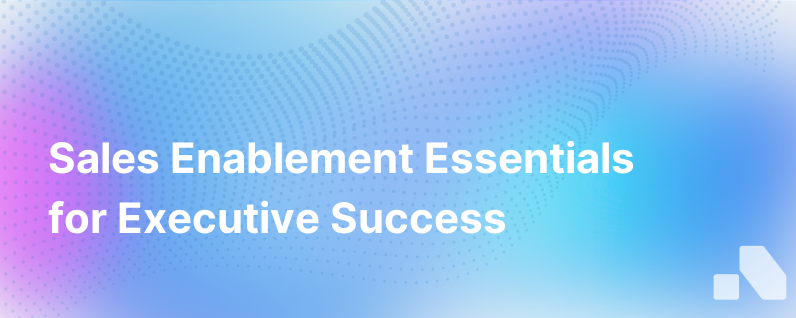
Sales enablement is no longer a nascent idea in the world of B2B sales. It's become a steadfast strategy pivotal to winning competitive sales battles. At the heart of sales enablement lie sales enablement materials – the tactical tools your sales team needs to effectively navigate the sales cycle. They equip your crew to sail the unpredictable seas of client acquisition, upselling, and retention.
This guide is here to explore impactful sales enablement materials, their significance, and how to assess what your team needs to clinch the deal efficiently.
What are Sales Enablement Materials?
Simply put, sales enablement materials are resources that assist your sales team during their interactions with leads, prospects, or existing clients. They're the backbone to substantiating claims, highlighting value, and overcoming objections.
Sales enablement materials can take numerous forms, which can be broadly categorized into:
Product Information: Spec sheets, product brochures, comparison charts, demos, and FAQs.
Sales Collaterals: Ebooks, whitepapers, case studies, and testimonials showcasing the value of your products.
Market Intelligence: Competitor insights, industry trends, and market analysis reports.
Educational Materials: Training courses, onboarding guides , workshops, and certification programs.
These are just some of many possible tools; the ideal mix of sales enablement materials varies based on your specific sales cycle and the sophistication of your buyers.
The Importance of Sales Enablement Materials
In an age where customers are well-informed and persuasive selling is the new norm, sales enablement materials play a vital role in fostering momentum in the sales process.
-
Educate Your Prospects: Providing easily digestible product information, industry insights, and educational content helps your prospects understand how your solution can better their lives.
-
Clarify Differentiators: With competition intense in the B2B landscape, sales enablement materials that spotlight the unique features and benefits of your solution can showcase what sets you apart from competing offerings.
-
Reduce Friction in the Sales Cycle: Concise, persuasive materials can proactively address objections and concerns, reducing friction in your sales cycle.
-
Standardize Sales Messaging: Providing your sales team with meticulously crafted materials ensures a uniform, impactful message is delivered every time.
-
Support Upselling and Cross-selling: Case studies, customer success stories, and testimonials can help illustrate how other clients benefitted from additional features or services, enabling upselling and cross-selling opportunities.
Assessing What Sales Enablement Materials Your Team Needs
Designing efficient sales enablement materials involves understanding your sales team's needs and tailoring them accordingly. The goal is to arm your sales force with the right weapon at the right time. Below are some steps to identify what your team needs.
-
Request Feedback from Sales Team: Conduct regular check-ins and surveys with your sales team to get their input. What resources do they wish they had during meetings? What objections do they struggle to handle?
-
Monitor Performance Metrics: Keep track of deal velocity, conversion rates, churn rates, and other tracking metrics. If a certain stage in the sales cycle is consistently a bottleneck, dig deeper to determine what kind of sales enablement content could assist.
-
Listen to Calls and Meetings: By shadowing sales calls and meetings, you can glean insights about common objections, concerns, and questions. Use these insights to guide your content creation strategy.
-
Leverage Sales Intelligence: Platforms like Aomni can provide you with real-time account-based insights, helping to inform personalized content that speaks directly to a prospect's situation and needs.
Examples of Impactful Sales Enablement Materials
Below are some examples of impactful sales enablement materials.
-
Battlecards: These are easily accessible, one-page documents with information about a particular topic. They can cover anything from competitor insights to buyer persona data, industry trends, objection handling, and more.
-
On-Demand Webinars: Webinars offer an in-depth look into a particular topic. By making them easily accessible on your website, prospects can engage with your material at their own pace, enhancing their knowledge and understanding of your products.
-
Interactive Product Demos: Interactive product demos allow the prospect to engage with your product on their terms, fostering a sense of ownership and familiarity.
In conclusion, strategic sales enablement materials enable your sales team to close deals more efficiently and effectively. The better armed your sales team, the higher your chances of successfully navigating the turbulent sales cycle and coming out on top. Use intelligent platforms like Aomni to gain a competitive edge in crafting relevant and impactful sales enablement materials.